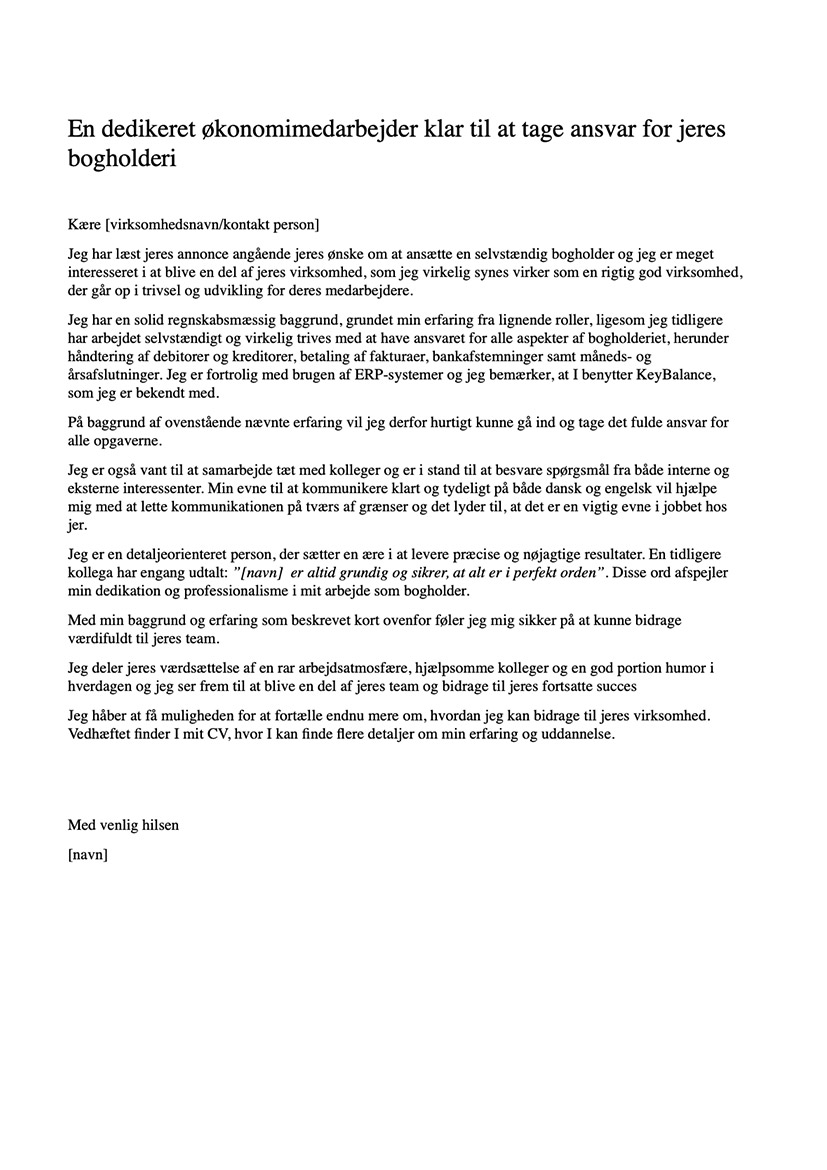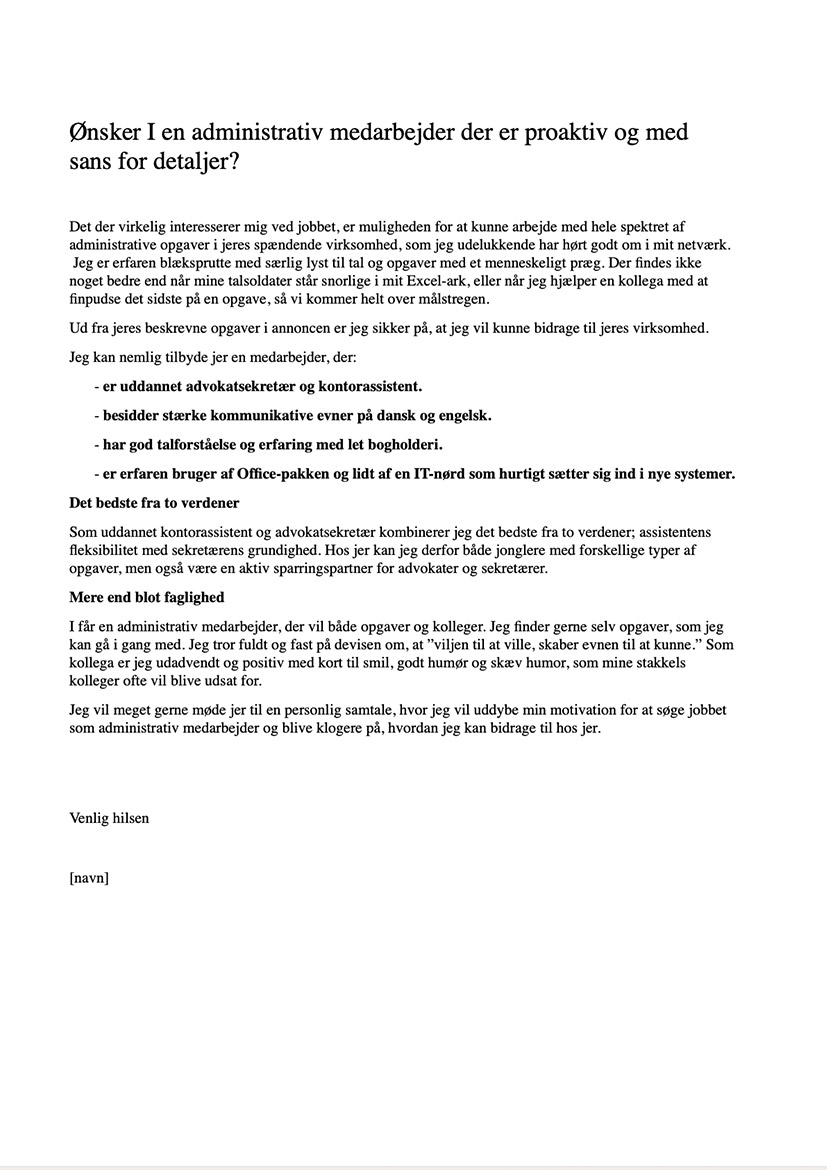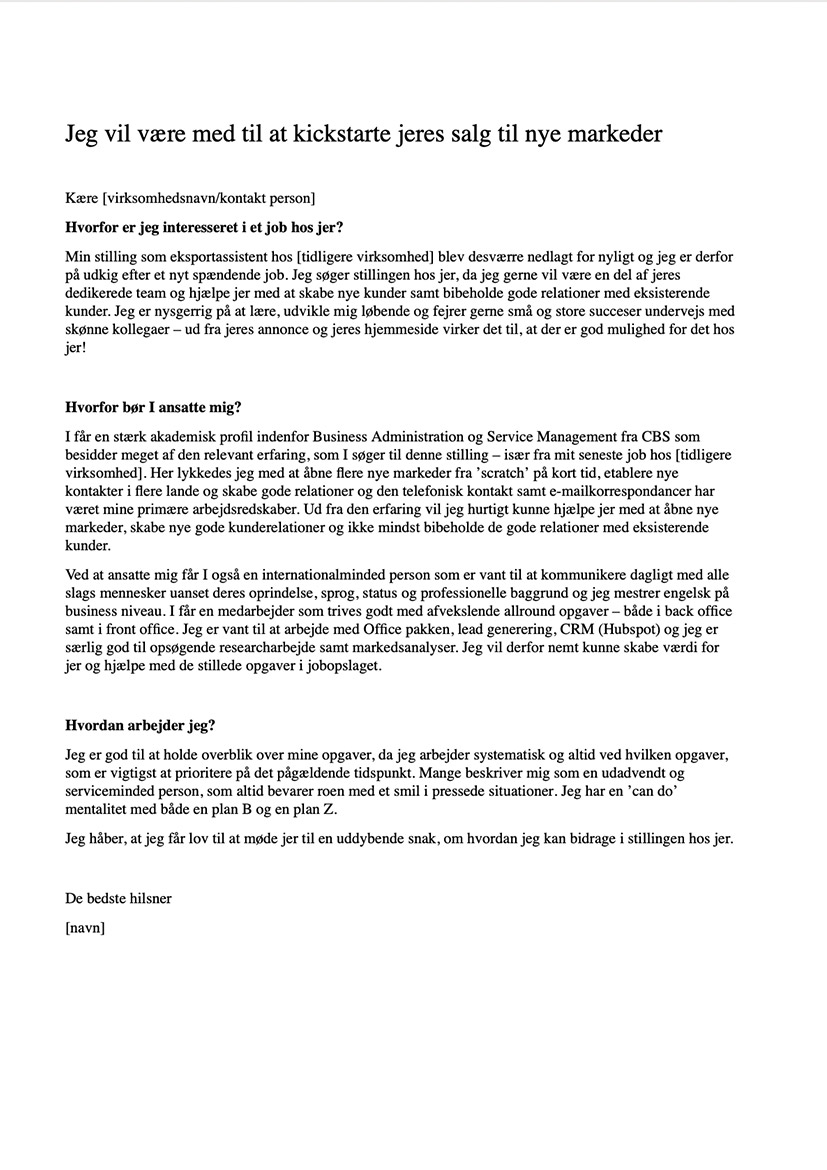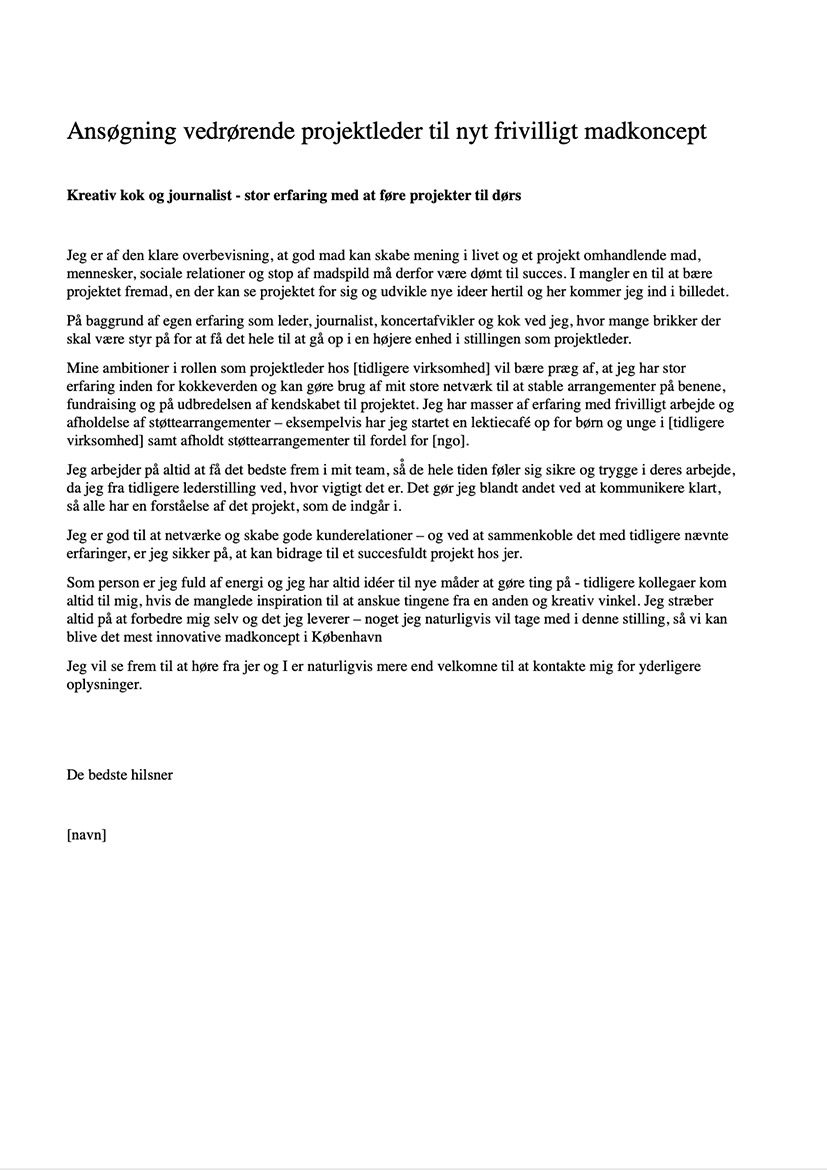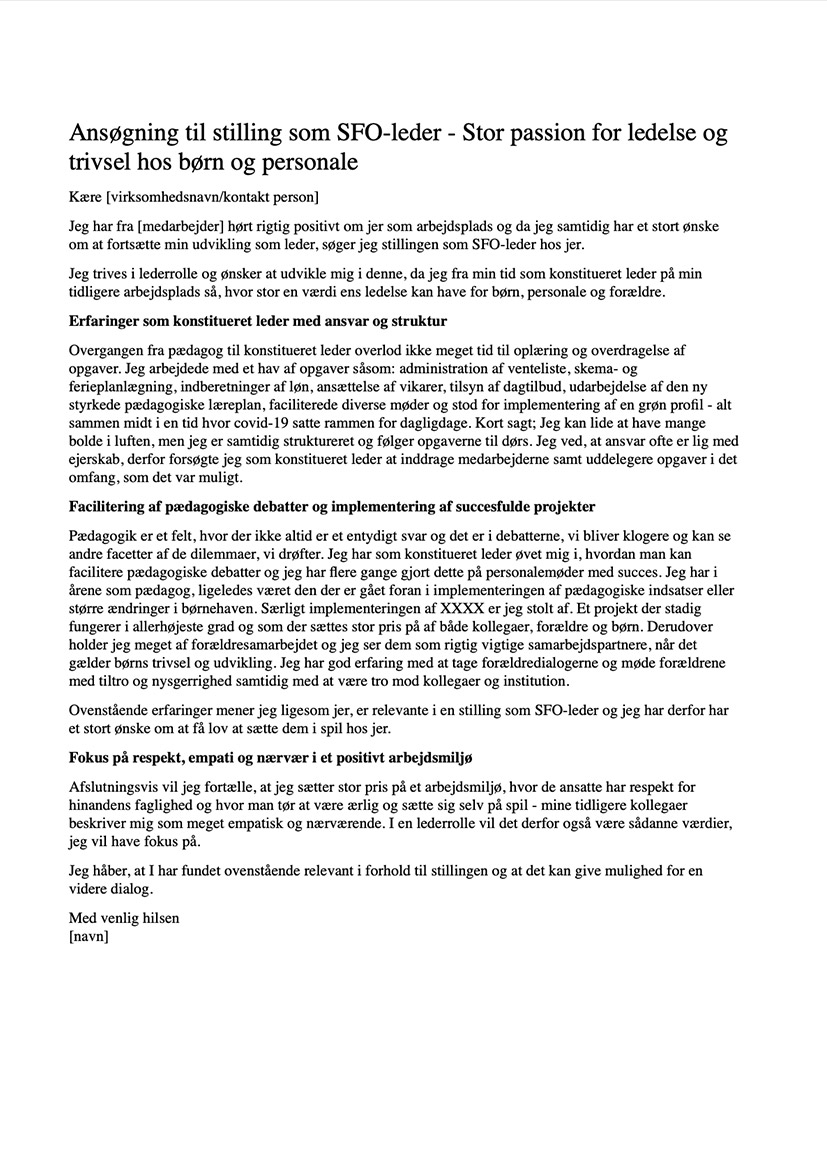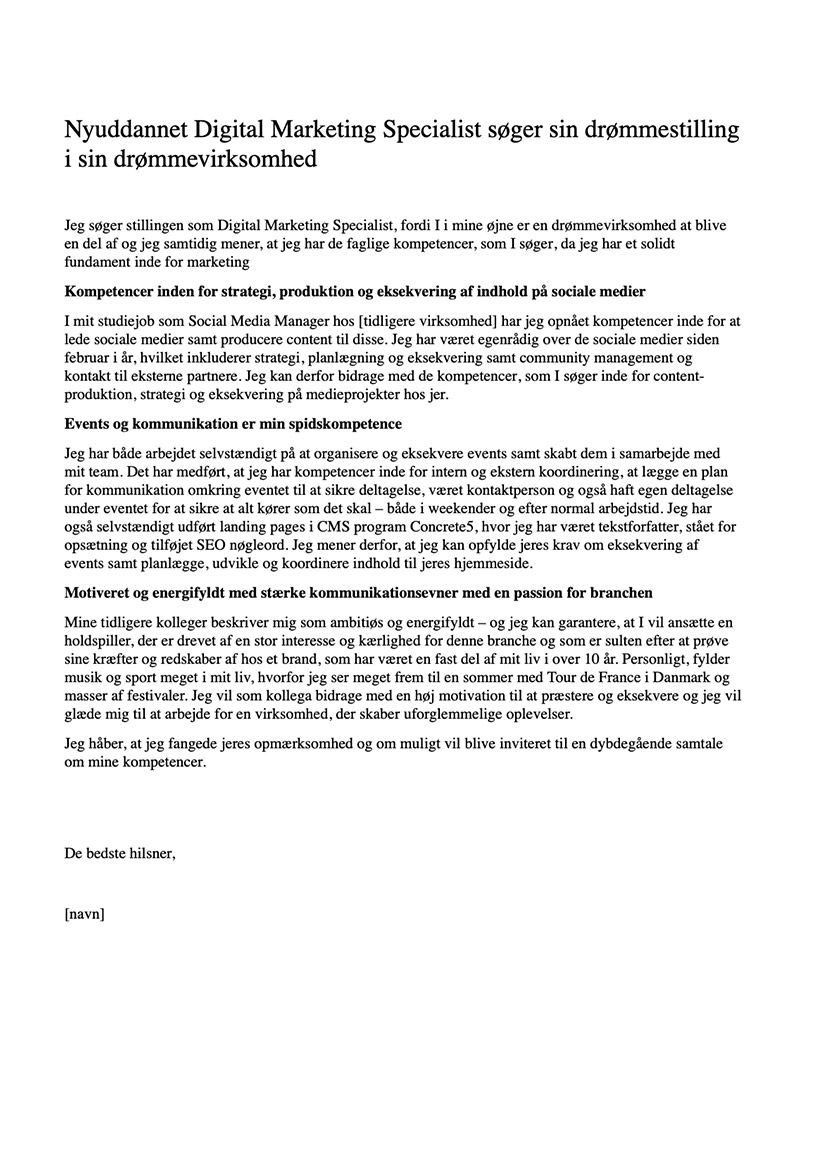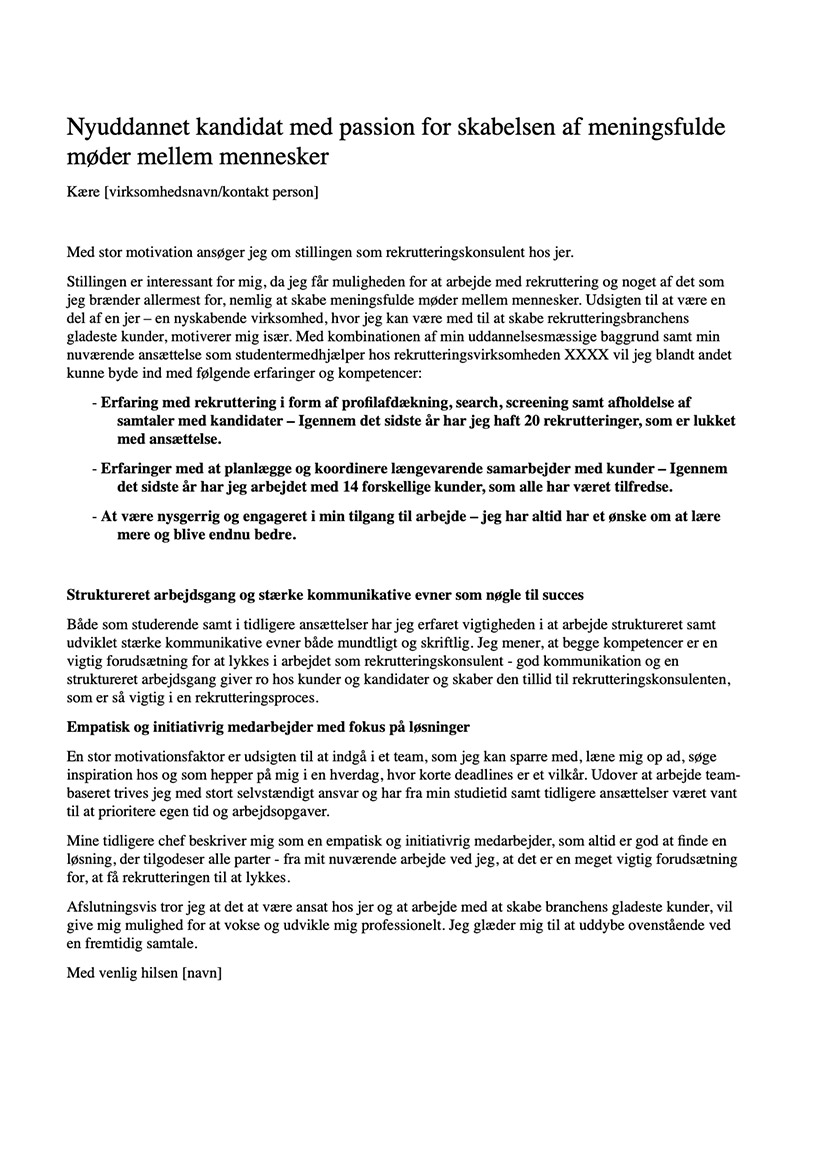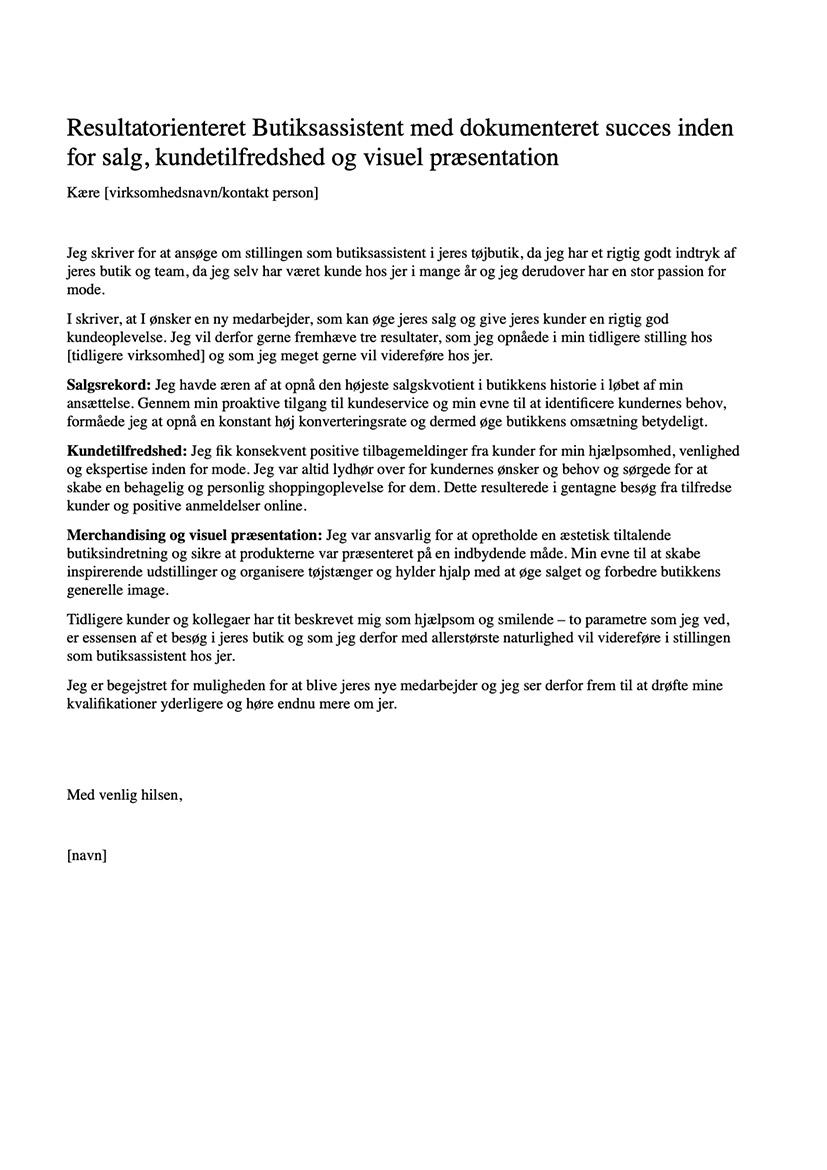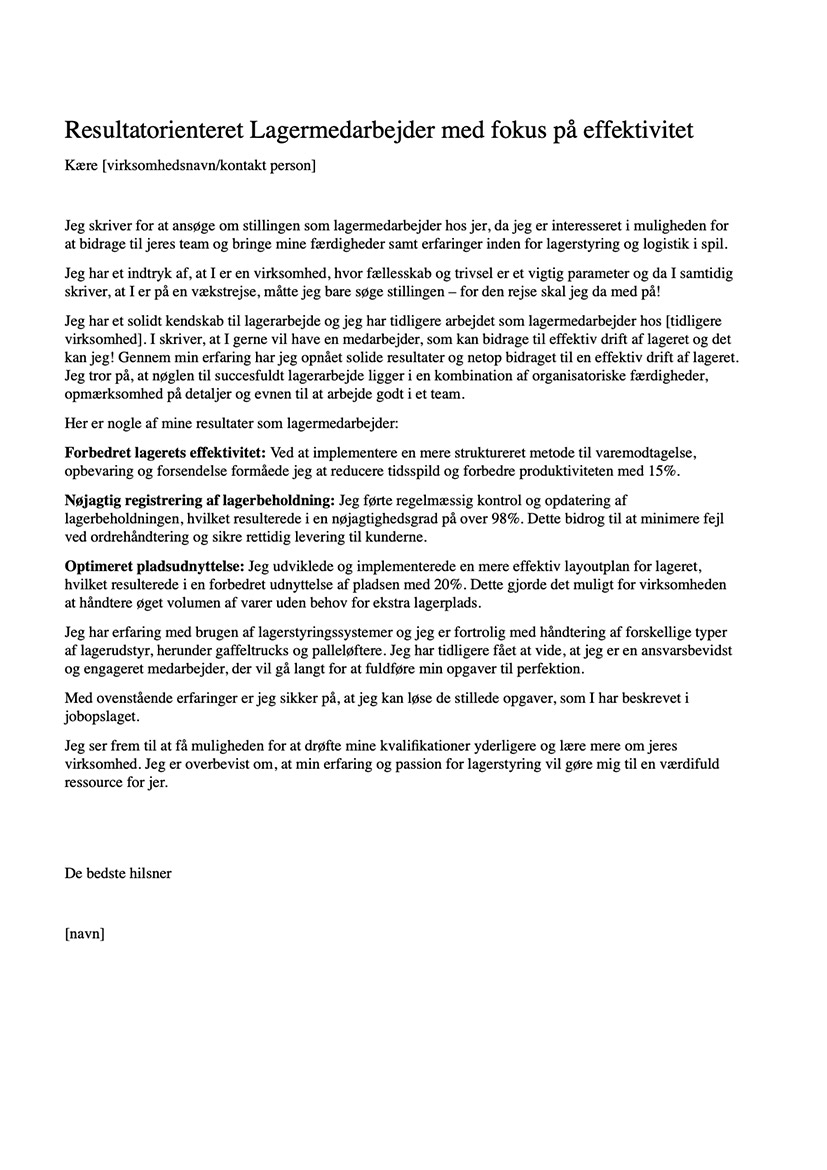Your browser (Safari 1.0) is more than 3 years old.
We recommend that you upgrade to the latest version. Otherwise we cannot guarantee that all functionality on Jobindex will work correctly.

How to write a great cover letter
Get help with your job search, inspiration for a stronger application, and a guide on how to write it in the best possible way – and remember, you only need to include what's relevant to you.
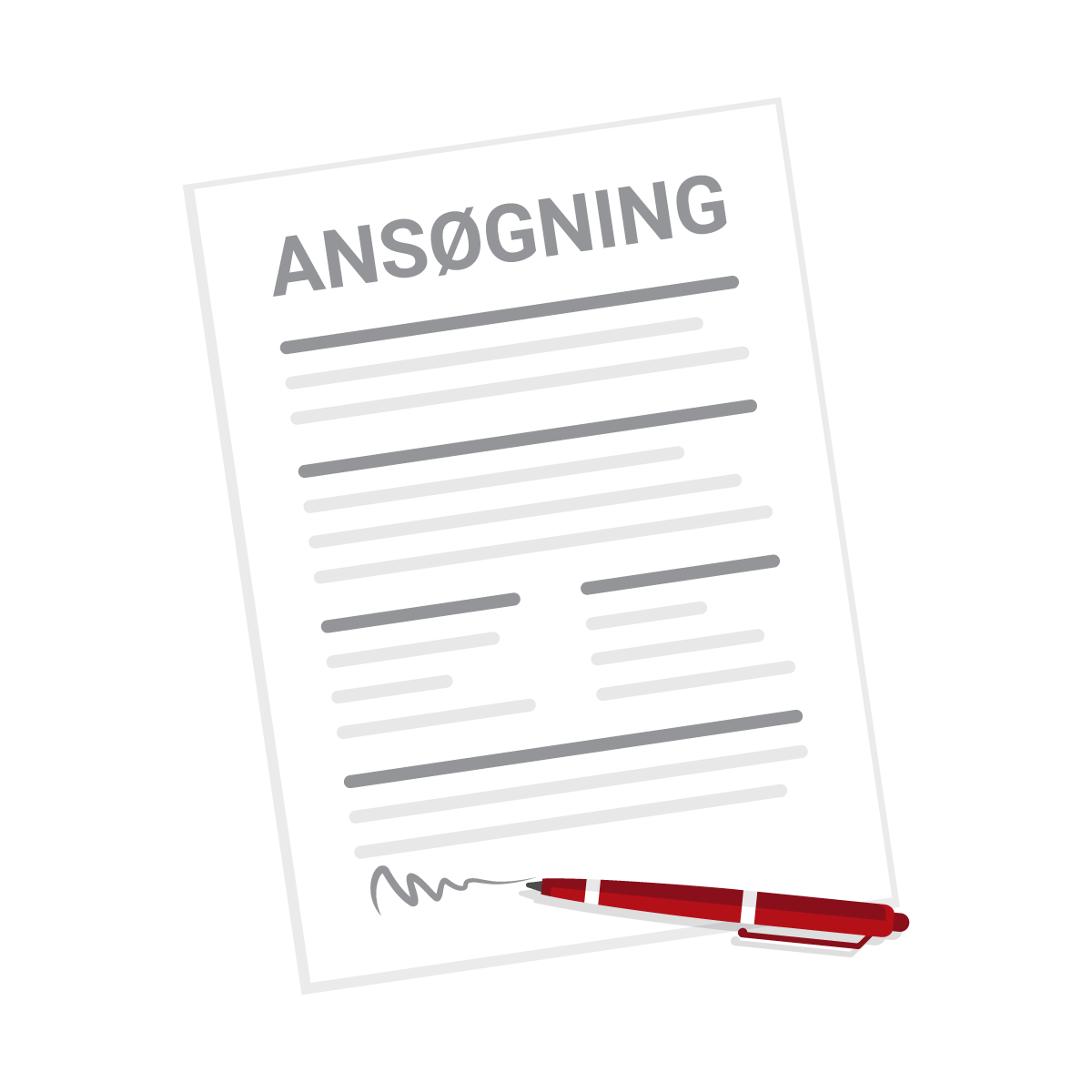
This page contains the following
Checklist: How to write a good job application in 5 steps
- Keep it short and to the point – max one page.
- Start with your motivation for applying for the specific job.
- Show how your skills match the company's needs.
- Use concrete examples and avoid generic clichés.
- Adapt your language and choice of words to the job posting.
Download our application template
On this page, you'll find the best tips and tricks to make writing your next job application easier. You can also download our application template to get started quickly. And you can see more examples of a motivated application further down the page.
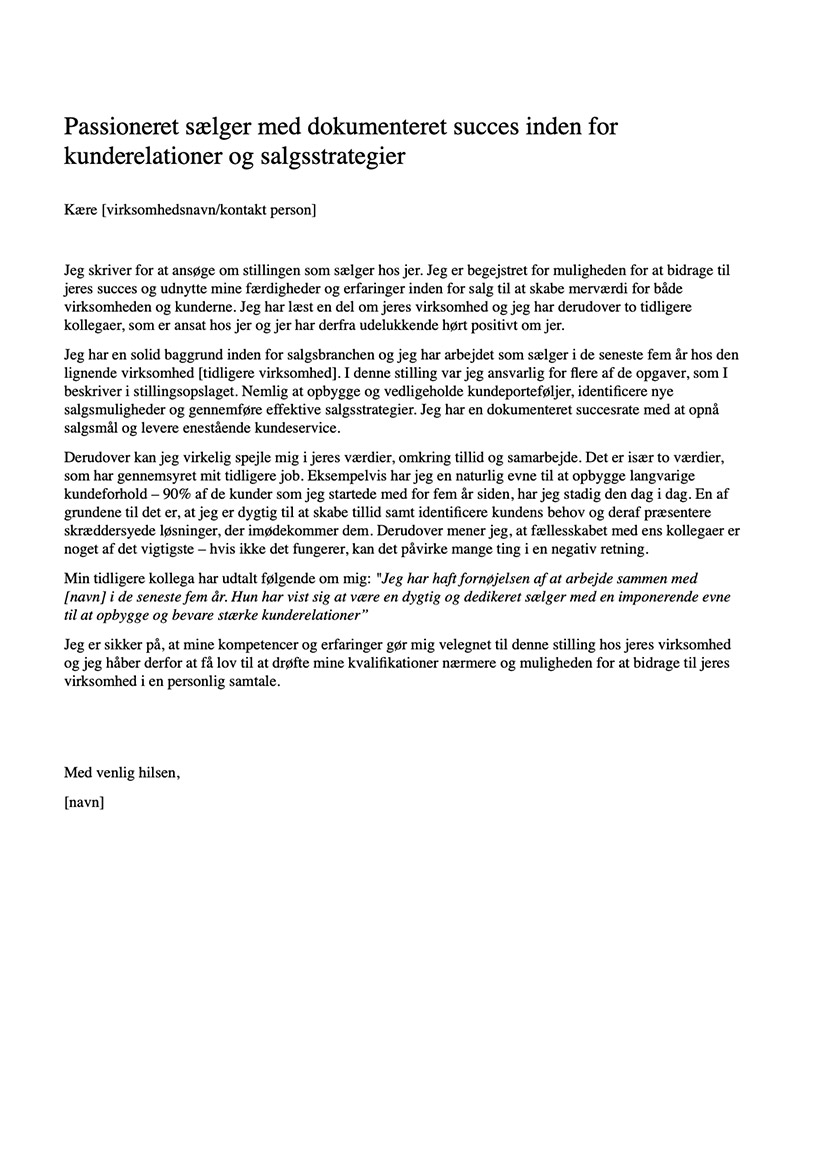
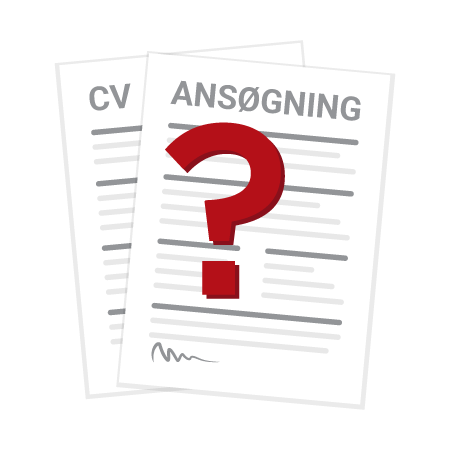
What is an application?
Before you start writing your job application, it's a good idea to be aware of the purpose of the application and how it differs from the CV.
The application is forward-looking, and this is where you describe how you can apply your experience and skills to this specific job.
The CV, on the other hand, is backward-looking and typically outlines what you have done and achieved in your previous jobs and during your education. In other words, what experience you have and what results you have achieved.
The application should therefore elaborate on what you have written in your CV.
Let relevant jobs find their way to you – you can be anonymous.
Create CVHow do I structure a job application?
There are some useful guidelines you can follow when it comes to the length of an application and how to make it easy to read and quick to grasp.
A good rule of thumb is that an application should be a maximum of one page – or around 500 words, as one page can mean many different things. But you're not doing the reader any favours by presenting too much text onto one page.
It's a good idea to make sure your application is easy to skim, so you make it as simple as possible for the company to get a quick overview of what you want to convey. You can do this by, for example:
- creating subheadings in your application
- highlighting specific keywords in bold
- using bullet points if you need to list something anyway
You can consider adding subheadings to your job application to create a better overview and make it easier to read.
For example, you can use this structure for inspiration:
HEADLINE – JOB TITLE
Why I'm applying for the position as XXX
(…)
What I can contribute to the job
(…)
What I'm like as a person
(…)
When space is limited, it's important to only include what's relevant to this specific company and this specific job. Write clearly and concisely, and cut out any unnecessary filler.
Do you know someone who can read through your application? If so, take them up on the offer – getting a fresh perspective can help you cut out unnecessary filler.
What should a good job application include?
Here you'll find inspiration for what your application can include. Remember, you don't have to cover everything – choose what makes sense for the type of job you're applying for.
The first thing you should do to tailor your application to a specific job at a specific company is to explain why you're applying. In other words, start with your motivation so it's clear what it is about the job and the company that excites you. For example, you could continue the sentence: “I'm applying for this job as XXX because XXX.”
It's a good idea to research the company's current challenges, as well as their vision and mission. You can do this through their social media channels, their website, or perhaps the company has been featured in the media with some recent news?
Mention it in your application if it's relevant to the job you're applying for or to your motivation for applying.
Be careful not to focus solely on yourself in the application without tailoring it to the company.
You can do this by continuously linking your skills and experience to the job and the company. For example: “In my most recent job, I primarily worked with XXX. For you, this means that I can contribute with XXX.”
It's a good idea to use some of the words from the job posting in your application. In a way, your application is a “response” to the job ad.
By using the same phrases and words, you show that you can identify the key elements from the job posting and relate them to your experience and skills.
A good job application always includes clear examples — for instance, how you would approach a task, which tasks you have previously completed that are relevant to this job, or what characterises you as a person. Always support what you write with examples.
It's better to focus on the most important points and support them with examples than to share too much information.
Many job postings often contain a number of clichés when describing the personal qualities the employer is looking for. For example: “You are structured and good at keeping an overview in stressful situations.”
That doesn't make the job any easier for you, but try to avoid repeating the clichés by simply writing: “I am structured and have always been good at keeping track of many tasks – even in stressful situations.”
The employer can't do much with that, as it doesn't say anything concrete about you. Instead, explain how you work in a structured way and what you've done in previous jobs when you've been in a stressful situation.
Feel free to write a bit about who you are so the company gets a sense that there's a real person behind the application. For example, it could be a quote from a former manager describing the way you work or a statement from a former colleague about what you're like as a coworker.
See examples of applications

